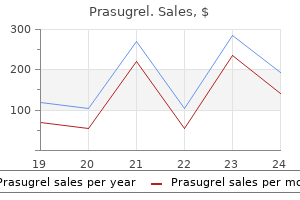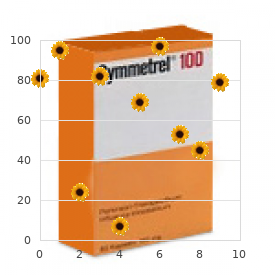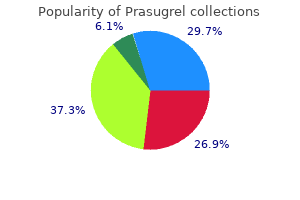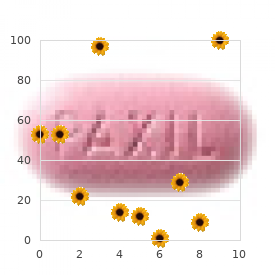Only $1.35 per item
Prasugrel dosages: 10 mg
Prasugrel packs: 30 pills, 60 pills, 90 pills, 120 pills, 180 pills, 360 pills
In stock: 887
10 of 10
Votes: 344 votes
Total customer reviews: 344
Description
Many tumors will also be discovered incidentally or surreptitiously by cardiac echo medications or drugs prasugrel 10mg order with visa. Cytologic analyses of pericardial effusion or pericardial biopsy may provide diagnostic information regarding metastatic cardiac tumors. Benign pericardial tumors and lesions include cysts, lipoma teratoma, fibroma, and angioma. This may occur through direct extension, retrograde lymphangitic spread, or hematogenous dissemination. Tumor involvement of the pericardium most commonly manifests as pericardial effusion or, occasionally, pericardial tamponade. The sound may be due to the tumor striking the left ventricular wall or to tension created on the tumor stalk. It occurs in the interatrial septum, resulting in the appearance of a thickened atrial septum. Lipomatous hypertrophy of the interatrial septum involves the limbus of the fossa ovalis and spares the fossa ovalis membrane, giving the atrial septum a "dumbbell shape. Papillary fibroelastomas are the second most common primary benign cardiac tumors and comprise 75% of valvular tumors. Echocardiographic and pathologic databases suggest that the diagnosis is increasing in frequency. More than 70% of papillary fibroelastomas occur on cardiac valves, and more than 80% to 90% of papillary fibroelastomas are solitary. The most usual location is on the mitral and aortic valves, although they can occur on right-sided valves. Papillary fibroelastomas are often small (<1 cm) and appear flower-like or frond-like with a narrow stalk. Most common symptoms related to papillary fibroelastomas are related to embolic events, such as stroke or transient ischemic attacks. Surgical resection may be recommended in individuals who have had an embolic event. Echocardiography (left panel) and cardiac computed tomography (right panel) images of a papillary fibroelastoma (arrows) attached to the aortic valve. Known by various names and acronyms, the Carney complex is an autosomal dominant syndrome consisting of cardiac myxomas, cutaneous myxomas, spotty pigmentation of the skin, endocrinopathy, and other tumors. Myxomas occurring as part of the Carney complex are reported to account for 7% of all cardiac myxomas. Myxomas occurring as part of the Carney complex often present earlier in life, tend to be located in atypical locations, are often multiple, and often have a higher rate of recurrence after surgical resection than sporadic myxomas. Linkage studies of the Carney complex have revealed two genetic susceptibility loci.

Eupatorium cannabinum (Hemp Agrimony). Prasugrel.
- Dosing considerations for Hemp Agrimony.
- How does Hemp Agrimony work?
- Are there any interactions with medications?
- Are there safety concerns?
- What is Hemp Agrimony?
- Liver and gallbladder disorders, colds, and fever.
Source: http://www.rxlist.com/script/main/art.asp?articlekey=96497
The device is much smaller than a conventional pacemaker and is comprised of a pulse generator that includes a battery and an electrode that is all intracardiac medications zetia prasugrel 10 mg buy on-line. This new technology eliminates long-term lead and subcutaneous pocket complications that can occur with standard pacemakers. It assumes that all pacemakers are communicative and programmable and consists of five letters: · Letter 1: Chamber that is paced (A = atria, V = ventricles, D = dual chamber) · Letter 2: Chamber that is sensed (A = atria, V = ventricles, D = dual chamber, 0 = none) · Letter 3: Response to a sensed event (I = pacing inhibited, T = pacing triggered, D = dual, 0 = none) · Letter 4: Rate-responsive features, is an activity sensor in the pulse generator that detects bodily movement and increases the pacing rate according to a programmable algorithm (R = rateresponsive pacemaker, 0 = none) · Letter 5: Chamber that is paced in multisite pacing (A = atria, V = ventricles, D = dual chamber). Complications in the hands of experienced operators are rare (approximately 1% to 2%) and include the following: bleeding, infection, pneumothorax, hemothorax, cardiac arrhythmias, cardiac perforation causing tamponade, diaphragmatic/phrenic nerve pacing, pocket hematoma, coronary sinus trauma, and prolonged radiation exposure. Late complications of pacemaker implantation include erosion of the pacer through the skin (requires pacer replacement, lead extraction, and systemic antibiotics), and lead malfunction (lead fracture, break in lead insulation, or dislodgment). Example of the components of a biventricular pacing system, with pacemaker generator a right atrial lead, a right ventricular lead, and a left ventricular lead. The pacemaker is percutaneously inserted into the right ventricular apex via a femoral venous approach. Chest x-rays showing the various positions in the right ventricle that the leadless pacemaker can be implanted. The device can be implanted in the right ventricular apex (left panel), mid septum (middle panel), or right ventricular outflow tract (right panel). Early performance of a miniaturized leadless cardiac pacemaker: the Micra Transcatheter Pacing Study. Historically, pacemaker syndrome refers to progressive worsening of symptoms, particularly congestive heart failure, after single-chamber ventricular pacing. This was due to asynchronous ventricular pacing, leading to inappropriately timed atrial contractions, including those occurring during ventricular systole. Dual-chamber pacing and appropriate pacing mode selection prevent the occurrence of pacemaker syndrome. Twiddler syndrome is a rare complication of pacemaker implantation caused by repetitive and often unintentional twisting of the generator in the pacemaker pocket, producing lead dislodgment or fracture and subsequent pacemaker failure. Permanent para-Hisian pacing is direct His bundle activation by the pacemaker system with subsequent ventricular activation. It is known to prevent desynchronization and negative inotropic effects that can be seen with right ventricular apical pacing. When activated, the His bundle creates a more efficient ventricular activation than conventional pacing (apical pacing). However, this method of pacing requires a normal His and infra-Hisian conduction system.

Specifications/Details
Transfusion (1020 ml kg1) may be necessary in premature infants if the haemoglobin falls below 78 g dl1 and the infant is symptomatic medications john frew prasugrel 10 mg order overnight delivery. Symptoms include breathlessness with feeds, tachycardia, apnoea and bradycardia or failure to gain weight. Premature infants receiving intensive care do end up receiving repeated blood transfusions. In such situations, exposure to multiple blood donors can be avoided by using the same batch blood from a single donor and stored in mini packs. The following formula may be used to calculate the volume of blood to be transfused for an anaemic infant (Hct is the haematocrit): the administration of subcutaneous recombinant human erythropoietin to preterm infants has been shown to stimulate red blood cell production, thereby avoiding the need for frequent blood transfusions. However, this treatment has not been shown to be cost-effective and is not widely used. Haemorrhage before and during delivery from: Placental placenta praevia, placental abruption, incision into the placenta during caesarean section. Neonatal haemorrhage: Trauma bleeding may occur into skull, brain, lung, peritoneum or bowel. These will depend on the provisional diagnosis and include: Haemoglobin and haematocrit. Treatment Acute blood loss, if significant, is more likely to present with signs of hypovolaemia and shock as the initial manifestation such as changes in blood pressure, heart rate, tissue perfusion and urine output. In acute haemorrhage, the haemoglobin may be normal in the beginning, as enough time has not passed for haemodilution to occur. Severe haemorrhage may present as a neonatal emergency and require immediate transfusion with blood or blood substitute (such as crystalloid or 4. In an emergency, unmatched group O rhesus-negative blood may be used, but formal cross-matching should be done whenever possible. Haemolysis is usually associated with unconjugated hyperbilirubinaemia and reticulocytosis. Causes of haemolytic anaemia can be broadly divided into two groups; immune and non-immune. Sensitization may be due to: fetomaternal transfusion (during previous delivery or from miscarriage); and/or rhesus-incompatible transfusions. Approximately 83% of the population are D positive, that is, rhesus positive (Rh +ve). IgG remains present in the neonatal circulation for up to 3 months, and neonatal haemolysis may continue to occur for some weeks after birth. Prevention Rh IgG prophylaxis (anti-D gammaglobulin) is indicated in the management of all non-immunized pregnant women who are Rh negative. The standard dose of 300 µg is sufficient for protection for up to 30 ml of fetal blood.
Syndromes
- Echocardiogram
- The name of the product (ingredients and strengths, if known)
- Problems swallowing (feeling like food is stuck behind the breast bone)
- It has been no more than 6 months since your baby was born.
- Amount swallowed
- Poor absorption of iron
- Back pain
- Larger (about 2 inches or 5 cm)
- Are you urinating more or less frequently than usual?

Hydrocoele A hydrocele is a fluid-filled collection within the layers of the tunica vaginalis medications dispensed in original container quality prasugrel 10mg. Undescended testis An undescended testis occurs when the testicle fails to fully descend from the abdomen into the scrotum. The majority of testes will continue to descend into the scrotum over the first 4 months of life, but if they do not then the baby should be referred to a paediatric surgeon. On the rare occasion that an apparent male infant has bilateral non-palpable testes, the baby should undergo urgent investigation for possible ambiguous genitalia. Hypospadias In this condition the urethral meatus opens on to the undersurface of the glans penis, the penile shaft or the perineum. It is one of the most common abnormalities of male infants, with an incidence of 1 in 350 male births. Frequently, there is a dorsal hood to the penis and a ventral curvature of the glans (chordee). Chromosome studies are indicated with undescended testes and severe penoscrotal or perineal lesions. Mild types are repaired in a one-stage procedure during the first 6 months, but severe types require several staged operations. The infant must not be circumcised, otherwise definitive surgical treatment will be made more difficult. Epispadias refers to the urethra opening on the dorsal surface of the penis, and this has a worse prognosis. Many of the malformations that affect the gastrointestinal tract are identified on antenatal ultrasound. Appropriate paediatric surgical management in the newborn period will allow most babies to have an excellent long-term outcome. Occasionally, some of these conditions are incompatible with life, others require active management, and some will need conservative observation only. This article discusses the basic physiology of the kidney, its role in amniotic fluid, presentation and investigation of renal disease, and specific conditions which may affect the renal tract. Role of amniotic fluid Amniotic fluid volume is regulated from a number of fetal pathways, including urine production, lung fluid secretion and fetal swallowing. Amniotic fluid has a number of important roles, including: Providing space for fetal growth and movement. Severity depends on the cause, duration and timing of onset, and degree of volume loss. The fetal kidney produces a relatively large amount of dilute urine; however, the fetus does not depend on the kidney to excrete waste products as the placenta performs this function. The net water and sodium balance is negative in the first few days of life, and this is the most important reason for babies losing weight in the first week of life.
Related Products
Additional information:
Usage: p.r.n.

Tags: prasugrel 10mg with amex, prasugrel 10 mg order online, prasugrel 10 mg sale, generic 10mg prasugrel mastercard
Customer Reviews
Sebastian, 27 years: Open surgical options are more durable and best suited for good risk or young patients. Similarly, targeted screening for parvovirus B19 during pregnancy is not recommended, in view of the low incidence of acquisition of parvovirus B19 infection during pregnancy, as well as the variable risk of fetal infection and sequelae17, 47. Shape-and size-controlled synthesis of uniform anatase Tio2 nanocuboids enclosed by active 100 and 001 facets. Especially if associated with chronic fetal hypoxia, can result in a benign intrahepatic cholestasis.
Umul, 56 years: Although the World Health Organization recommends including varicella vaccines in universal routine vaccination programs, many countries have not adopted the vaccine. Relative haemodilution There is an increase in plasma volume over the first months of life and, together with poor red cell production, the haemoglobin falls. Ambulatory telemetry is a monitoring system that continuously records a 1- to 3-lead strip for 14 to 30 days. Nevertheless, the long-term prognosis for vertically infected children remains undefined.
Nerusul, 38 years: Can nicotine replacement therapy be initiated in the inpatient setting for patients with cardiac disease Bradyarrhythmia · Profound (sinus) bradycardia · Sick sinus syndrome/tachy-brady syndrome · Heart block · Pacemaker malfunction b. How should unfractionated heparin, low-molecular-weight heparin, or fondaparinux and warfarin be overlapped for acute treatment of venous thromboembolism Hematologic abnormalities observed in infants with congenital toxoplasmosis include anemia, leukocytosis, atypical lymphocytes, eosinophilia, and thrombocytopenia.
Bogir, 37 years: This is particularly relevant in infants with pneumothorax, lung cysts or trapped gas in the bowel or the peritoneal cavity. Classically, the infant at birth is found to have persistent snuffles, skin eruptions and widespread metaphyseal bony lesions. Infection and local treatment in orthopedic surgery (Springer, Berlin Heidelberg), 396 p. The general approaches are thus: (i) incorporation of potential bacteria-killing agents such as antibiotics, silver etc.
Kayor, 55 years: Intrapartum (early-onset) infection At birth it may be difficult to decide whether a baby is infected, or not. Premature delivery and a smallfor-gestational-age phenotype are also commonly encountered in congenitally 8 Congenital and Per inatal Infections infected infants. For example, neurons of the cerebral cortex are highly infectable on postnatal day 1 but are not infectable just 3 days later, on postnatal day 4. Other conditions that do not cause transient global cerebral hypoperfusion can cause a transient loss of consciousness; some experts believe that these conditions should be referred to as transient loss of consciousness instead of syncope.
Taklar, 43 years: Although considered an emerging infection in resource-rich countries, where its presence has been recognized only recently, the virus itself is not new. Gestation at birth (weeks) <24 24 25 26 27 2832 Survival (%) 43 66 84 88 94 97 750999 10001249 12501500 90 95 95 Birthweight (g) 400499 500749 Survival (%) 56 73 Source: Chow, S. An early invasive strategy is not recommended in patients with extensive comorbidities such as hepatic or renal failure or cancer, in whom the risks of catheterization and revascularization are likely to outweigh the benefits of such a strategy. In total, 77 Chlamydia-positive women and their infants were followed 612 weeks after delivery.
Milten, 63 years: Maternal Hypotension Hypertension, including pre-eclampsia Diabetes mellitus Cardiovascular disease Anaemia Malnutrition Dehydration Hypercontractability, usually due to excessive use of oxytocin (Syntocinon) or prostaglandins Abnormal placentation Abruption Vascular degeneration Uterine Placental Umbilical Cord prolapsed True knot in cord Cord entanglement. Prenatal diagnosis of congenital varicella syndrome and detection of varicella-zoster virus in the fetus: a case report. Congenital anomalies may be classified into deformations and malformations: Deformations result from late changes in previously normal structures by destructive pathological processes or intrauterine (extrinsic) forces; for example, talipes, hydrocephalus and bowel atresia. What is the American College of Surgeons National Surgical Quality Improvement Project risk calculator, and how should it be used clinically



